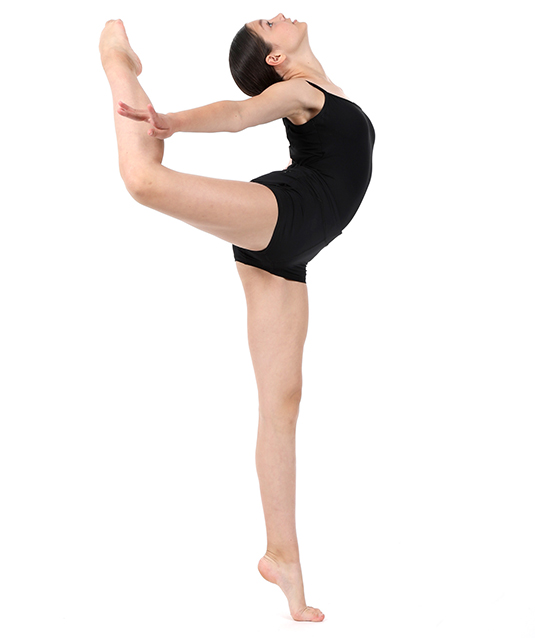
This step should create the comical effect of the legs looking as if they are made of rubber. The step was popularized in the 1940s in the Lindy hop. On the "a" count, both knees return to the original position. On the "and" count, both knees open up as weight shifts to one foot. Crazy legs: a step donewith the knees bent and a forced arch on both feet. Find your own way of doing it and don't try to be too correct. He could do this step underneath his partner's long legs. The Shorty George was named after jitterbug and Lindy hop dancer "Shorty" George Snowden in the 1930s. Repeat to the other side and in sequence. Shorty George: a step with the knees together, stepping slightly forward on one foot while swinging the knees and hips to the same side as the stepping foot with the heels barely off the ground. Do a low flick kick to the side with the right foot, step back on the right foot, and finish with a ball change back front with the left foot and then the right foot. Make a small leap on the left while doing a low flick kick forward with the right and then hop on the left. To try the 1940s Lindy hop version of the Charleston, do a low flick kick forward with the left while making a small hop on the right. 
For variation, try the 1920s flapper version by replacing the flick kick with a touch forward, turning the feet in on the upbeat, and turning them out on each step and touch.
#JAZZ DANCE MOVES FREE#
Charleston: a step forward on one foot, small flick kick forward with the other foot, step back with the free foot, and then touch behind with the original foot.Stay on the balls of the feet and stay with the music.Let the hips switch from side to side but keep the torso facing front.The step can be done on a straight leg or with knees bent, on the balls of the feet, or on the whole foot. At same time step on ball of the right foot with the toe pointed to the right. Change weight to the ball of the left foot and pivot to the right on the ball of the left foot until the left toe is pointed to the right. Sugar: starts with the feet in jazz second position and weight equally on both feet.White performers appropriated the step and presented it in minstrel shows. The cakewalk was a popular dance tradition among slaves on plantations in the 19th century. Leap immediately after the flick kick onto that same leg to repeat on the other side.

This step is often done with the torso leaning slightly backward.
 Cakewalk: a leaping kick forward that begins with a small leap onto one foot while the other leg flick kicks and is then immediately repeated on the other side. Keep the supporting leg and the spine straight. The extension should be sharp, like a flicking motion. This step can be done small, medium, or large. Flick kick: a kick performed by lifting a knee while bent, extending the leg sharply, and then bending it again on the way down. As you explore these steps, see whether you can recognize aspects or even the whole step in current dance styles. Often, traditional jazz steps are recycled into new dance styles. In this section, they are presented in historical order, starting with the oldest. These steps include weight shifts and elevations combined with characteristic body positions and arm gestures. Traditional jazz steps derive from historical jazz dance styles. This is an excerpt from Beginning Jazz Dance With Web Resource by James Robey.
Cakewalk: a leaping kick forward that begins with a small leap onto one foot while the other leg flick kicks and is then immediately repeated on the other side. Keep the supporting leg and the spine straight. The extension should be sharp, like a flicking motion. This step can be done small, medium, or large. Flick kick: a kick performed by lifting a knee while bent, extending the leg sharply, and then bending it again on the way down. As you explore these steps, see whether you can recognize aspects or even the whole step in current dance styles. Often, traditional jazz steps are recycled into new dance styles. In this section, they are presented in historical order, starting with the oldest. These steps include weight shifts and elevations combined with characteristic body positions and arm gestures. Traditional jazz steps derive from historical jazz dance styles. This is an excerpt from Beginning Jazz Dance With Web Resource by James Robey.







 0 kommentar(er)
0 kommentar(er)
